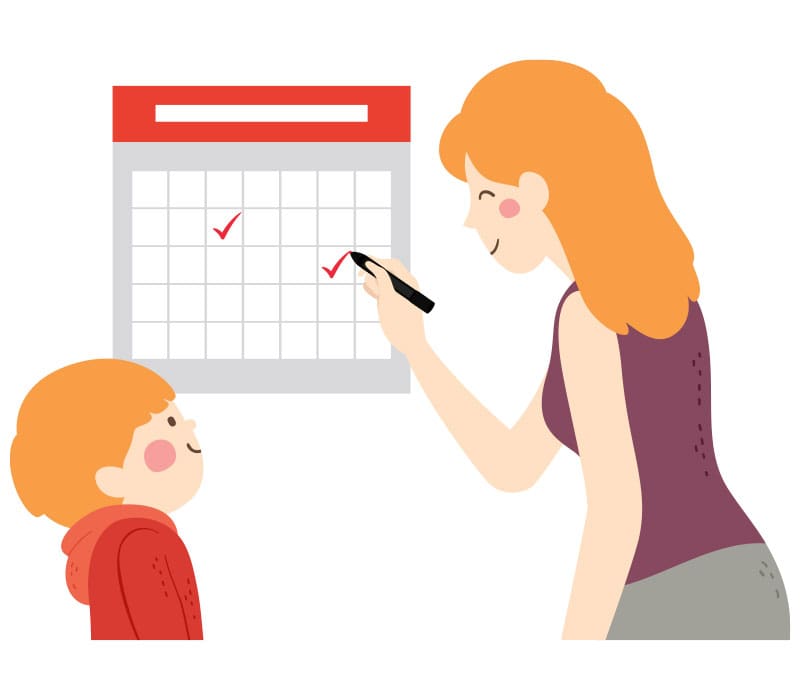
Teachable moments
How to help your child achieve school-life balance
Most of us are familiar with the battle for work-life balance, and school-life balance is not so different. As a parent of two elementary-age children and the leader of a tutoring service in Canada, I know first-hand that this topic resonates with many families. So where is the balance and why is it important?
Attending school can be viewed like a job, while participating in activities and hobbies may be considered personal time—and most people need a healthy mix of both. Like adults, students can experience feelings of stress, exhaustion and burnout when spread too thin by overloaded schedules lacking proper breaks and time for self-care. While balance has different interpretations, the benefits are clear: physical and mental wellness, positive friendships and family relations, and strong academic performance.
Here are eight ways to approach school-life balance for the year ahead:
Involve your child in planning their activities. I am a firm believer in involving children in their schedules. When a list of options for lunch and after-school programs comes home, consider making selections together. Listen to your child if they feel too much is on their plate, and encourage participation in clubs outside of your child’s comfort zone, such as chess or coding, in addition to familiar experiences.
Get organized as a family. Planning and organizing skills are key for achieving balance. In my home, we have a family calendar for all to see on a bulletin board in our kitchen. The kids use themed stickers in addition to writing out their activities, birthday parties and pizza lunch schedules to stay on track.
Stay on top of academics. Often, I see students experience severe anxiety and a decline in self-confidence when struggling in school. A proactive approach is to encourage getting help right away from a family member, teacher, peer or professional tutor.
Set aside unstructured time. “In our fast-paced world, taking the time to pause between transitions and actually even build in recovery time can be important for children to re-energize and breathe,” says Dr. Ainslie Gray, a Costco member and co-founder and medical director at Springboard, a multi-disciplinary clinic in Toronto that offers attention deficit/hyperactivity disorder mental health assessments and treatment services for children, adolescents and adults.
Consider mental health check-ins and self-care breaks. “Teaching children to recognize physical symptoms of their emotions, like ‘butterflies’ when feeling anxious, nervous or excited, can help them build self-awareness and mental health resilience. At home, parents can model talking about their own feelings and taking self-care breaks as part of committing to mental health wellness in your family life,” Gray explains.
Maintain a healthy lifestyle. Solid routines include proper sleep, exercise and nutrition. My family enjoys reading every night before bedtime, swimming and grocery shopping on weekends, and skiing during school breaks. Incorporating quality time into an active lifestyle is a win-win.
Put your oxygen mask on first. Think of the instructions given by flight attendants to put on your own oxygen mask first. “When we, as the adults, model taking breaks and [making] selfcare decisions in our home life, we give permission to our children to learn to read and trust their emotional wants and needs too,” says Gray.
Have fun! Every day has the potential to involve something kids look forward to in the quest for school-life balance. Enjoy the journey together!
Fun activity ideas
Many parents are looking to free up calendar space by registering for less structured programming. However, we still need flexible ideas to keep kids engaged and occupied, especially during weekends and breaks from school. Consider local libraries, parks, nature trails and recreation centres that allow drop-ins with no reservation. Explore museums, art galleries, amusement parks, science centres and zoos. Annual passes makes multiple trips more accessible than daily admission tickets.—JS

© BNP DESIGN STUDIO / STOCK.ADOBE.COM
Tracking your family’s schedule
Here are four ways to help keep your family organized.
Family calendars. Use a physical or digital calendar that can be shared by all household members.
Organization apps. Apps with a variety of features and capabilities allow families to create and edit to-do lists, track chore completion with rewards and set events like homework time and vacations.
Menu plans. Save time and money while encouraging healthy eating.
Visual schedules. A daily or weekly schedule in a visible location can reinforce student participation and independence in their routine. This is especially helpful for visual learners.
—JS
MARK BEAUCHAMP
Joanne Sallay is the president and CEO of Teachers on Call (teachersoncall.ca), a tutoring service that provides learning support by certified professional teachers.
Costco Connection: Costco warehouses and Costco.ca carry computers, pens, paper and more to help your schoolage children. Costco.ca.

